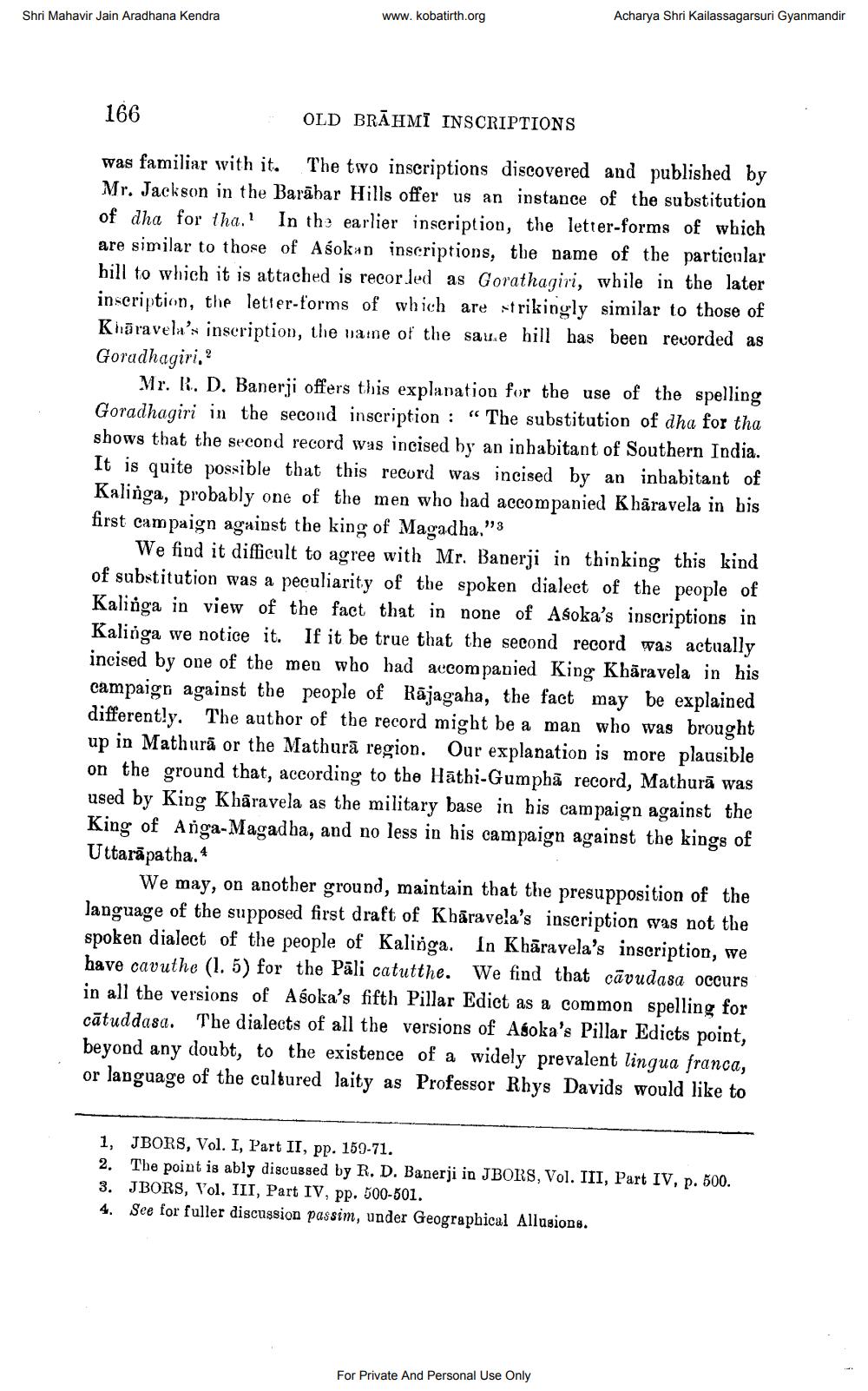________________
www.kobatirth.org
Shri Mahavir Jain Aradhana Kendra
Acharya Shri Kailassagarsuri Gyanmandir
166
OLD BRĀHMI INSCRIPTIONS
was familiar with it. The two inscriptions discovered and published by Mr. Jackson in the Barābar Hills offer us an instance of the substitution of dha for tha.? In the earlier inscription, the letter-forms of which are similar to those of Asokan inscriptions, the name of the particular bill to which it is attached is recorded as Gorathaqiri, while in the later inscription, the letter-forms of which are strikingly similar to those of Khāravela's inscription, the paine of the sau.e hill has been recorded as Goradhagiri.?
Mr. R. D. Banerji offers this explanation for the use of the spelling Goradhagiri in the second inscription : “ The substitution of dha for tha shows that the second record was incised by an inhabitant of Southern India. It is quite possible that this record was incised by an inbabitant of Kalinga, probably one of the men who had accompanied Khāravela in bis first campaign against the king of Magadha,”3
We find it difficult to agree with Mr. Banerji in thinking this kind of substitution was a peculiarity of the spoken dialect of the people of Kalinga in view of the fact that in none of Asoka's inscriptions in Kalinga we notice it. If it be true that the second record was actually incised by one of the men who had accompanied King Khāravela in his campaign against the people of Rājagaha, the fact may be explained differently. The author of the record might be a man who was brought up in Mathurā or the Mathurā region. Our explanation is more plau on the ground that, according to the Hāthi-Gumphā record, Mathurā was used by King Khāravela as the military base in his campaign against the King of Anga-Magadha, and no less in his campaign against the kings of Uttarāpatha. 4
We may, on another ground, maintain that the presupposition of the language of the supposed first draft of Khāravela's inscription was not the spoken dialect of the people of Kalinga. In Khāravela's inscription, we have cavuthe (1. 5) for the Pāli catutthe. We find that cāvudasa occurs in all the versions of Asoka's fifth Pillar Edict as a common spelling for cātuddasa. The dialects of all the versions of Asoka's Pillar Edicts point, beyond any doubt, to the existence of a widely prevalent lingua franca, or language of the cultured laity as Professor Rhys Davids would like to
1, JBORS, Vol. I, Part II, pp. 159-71. 2. The point is ably discussed by R. D. Banerji in JBORS, Vol. III, Part IV, p. 500. 3. JBORS, Vol. III, Part IV, pp. 500-501. 4. See for fuller discussion passim, under Geographical Allusions.
For Private And Personal Use Only




